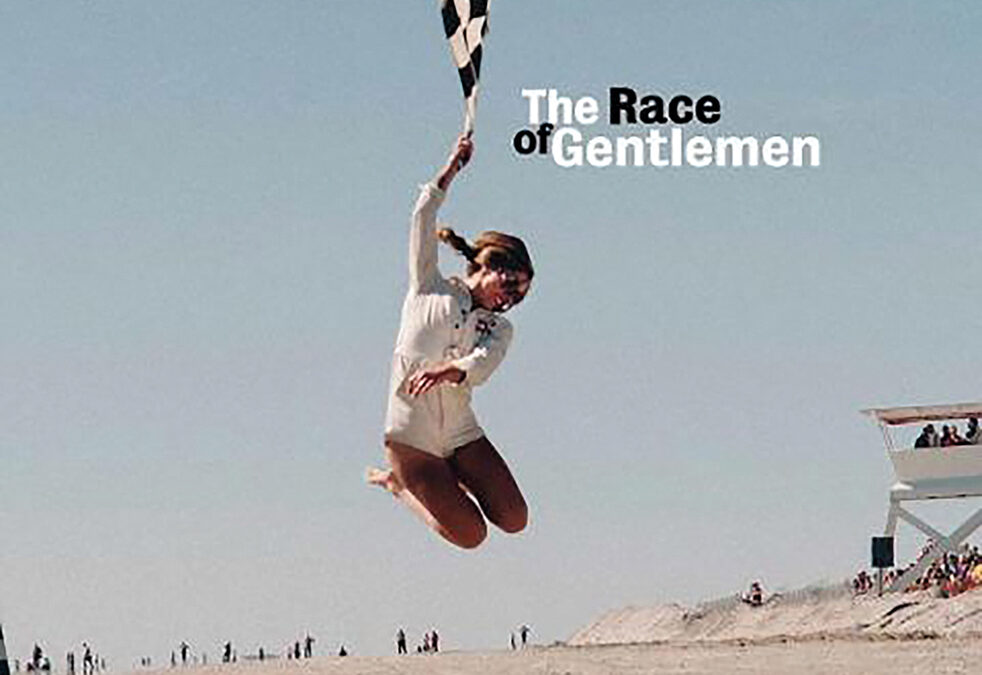
Here We Are . . . on Route 66 explores and celebrates iconic landmarks and cultural touchstones associated with America’s most famous highway—and guides you to some lesser-known gems just off the beaten path.
Spanning nearly 2,500 miles and eight states—Illinois, Missouri, Kansas, Oklahoma, Texas, New Mexico, Arizona, and California—America’s Main Street has given rise to a colorful assortment of roadhouses, motels, greasy spoons, roadside amusements, and breathtaking natural scenery. Acclaimed Route 66 historian Jim Hinckley is your guide to a carefully curated selection of these sites, ranging from the iconic to the revelatory.
Arranged by classic Route 66 topics, each spread gives you a different 66 site or attraction, along with a concise and authoritative history illustrated with colorful photography, evocative historical imagery, and collectibles like postcards, ads, and more. Topics of organization include:
- Towns and Cities
- Natural Wonders
- Roadside Attractions
- Eateries
- Motels and Hotels
- Music, Film, and TV
Hinckley is perhaps the most internationally recognized authority on the subject of America’s Main Street. This collection offers you the stories behind Route 66 icons such as Baxter Springs and Tucumcari, Meramec Caverns, Arroyo Seco Byway, Berghoff’s and the Oatman Hotel, Munger Moss and Wigwam Motel—and dozens more. Hinckley also treats you to a fresh look at lesser known but deserving attractions too.
At nearly a century old, Route 66 remains the embodiment of the classic American highway. Written by an acknowledged authority on the subject, wonderfully illustrated, and presented in a manner that allows you to dip in and out, Here We Are . . . on Route 66 is a must-have for your Route 66 bookshelf.

On December 22, 1964, at a small, closely guarded airstrip in the desert town of Palmdale, California, Lockheed test pilot Bob Gilliland stepped into a strange-looking aircraft and roared into aviation history.
Developed at the super-secret Skunk Works, the SR-71 Blackbird was a technological marvel. In fact, more than a half century later, the Mach 3–plus titanium wonder, designed by Clarence L. “Kelly” Johnson, remains the world’s fastest jet.
It took a test pilot with the right combination of intelligence, skill, and nerve to make the first flight of the SR-71, and the thirty-eight-year-old Gilliland had spent much of his life pushing the edge.
In Speed one of America’s greatest test pilots collaborates with acclaimed journalist Keith Dunnavant to tell his remarkable story: How he was pushed to excel by his demanding father. How a lucky envelope at the U.S. Naval Academy altered the trajectory of his life. How he talked his way into U.S. Air Force fighters at the dawn of the jet age, despite being told he was too tall. How he made the conscious decision to trade the security of the business world for the dangerous life of an experimental test pilot, including time at the clandestine base Area 51, working on the Central Intelligence Agency’s Oxcart program.
The narrative focuses most intently on Gilliland’s years as the chief test pilot of the SR-71, as he played a leading role in the development of the entire fleet of spy planes while surviving several emergencies that very nearly ended in disaster.
Waging the Cold War at 85,000 feet, the SR-71 became an unrivaled intelligence-gathering asset for the U.S. Air Force, invulnerable to enemy defenses for a quarter century.
Gilliland’s work with the SR-71 defined him, especially after the Cold War, when many of the secrets began to be revealed and the plane emerged from the shadows—not just as a tangible museum artifact but as an icon that burrowed deep into the national consciousness.
Like the Blackbird itself, Speed is a story animated by the power of ambition and risk-taking during the heady days of the American Century.
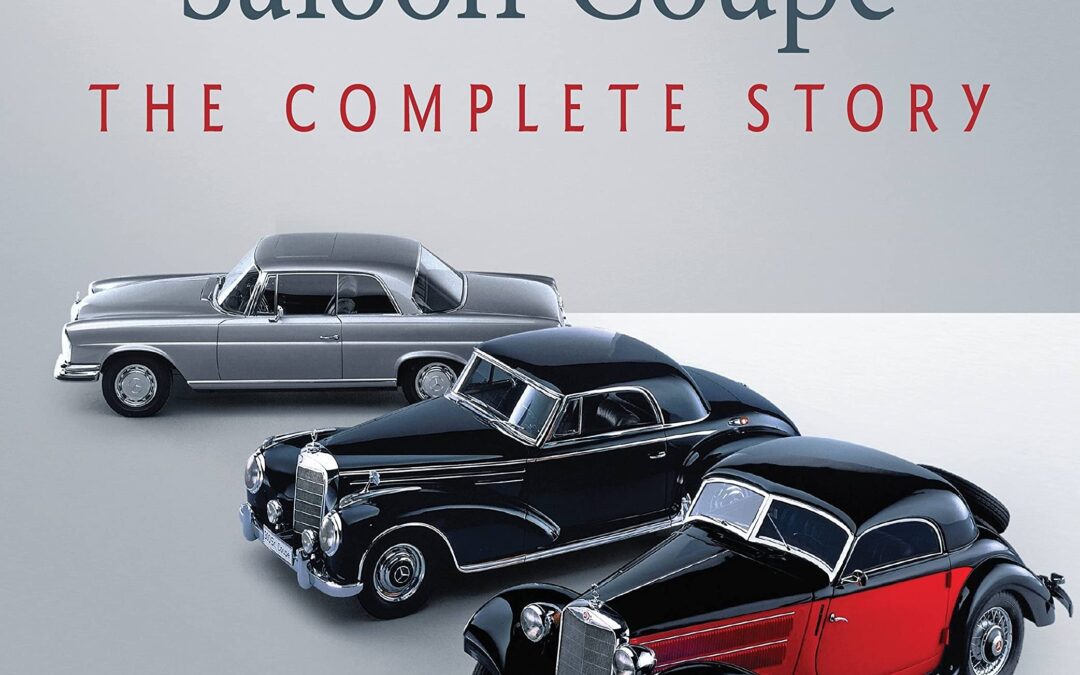
First produced in 1928, Mercedes-Benz Coupés became the embodiment of elegance and exclusivity on four wheels. Their design became an experience for all the senses, appealing to every emotion.
Hans-Dieter Futschik, the designer responsible for many of the later Mercedes-Benz models, said of the Saloon Coupé: ‘A shorter wheelbase compared with the saloons gives it different proportions that are almost sports car-like in character. The passenger compartment is set further back. This gives it a sportier look than a saloon. In addition, the greenhouse is smaller and more streamlined than the basic body. It looks like a small head set on a muscular body, exuding a powerful and more dynamic attitude… Everything radiates power, elegance and agility.’
This complete guide includes an overview of early automotive history; pre-merger design from both Benz and Daimler; the historical protagonists and how they influenced the design; how design and fashion change vehicle shape; the continued development of Saloon Coupe design to suit every class and finally, the modern idea of the Coupe.
With over 200 photographs and illustrations, this book includes:
- An overview of early automotive history
- Pre-merger design from both Benz and Daimler
- The historical protagonists and how they influenced the design
- How design and fashion change vehicle shape
- The continued development of Saloon Coupé design to suit every class
- The modern idea of the Coupé.
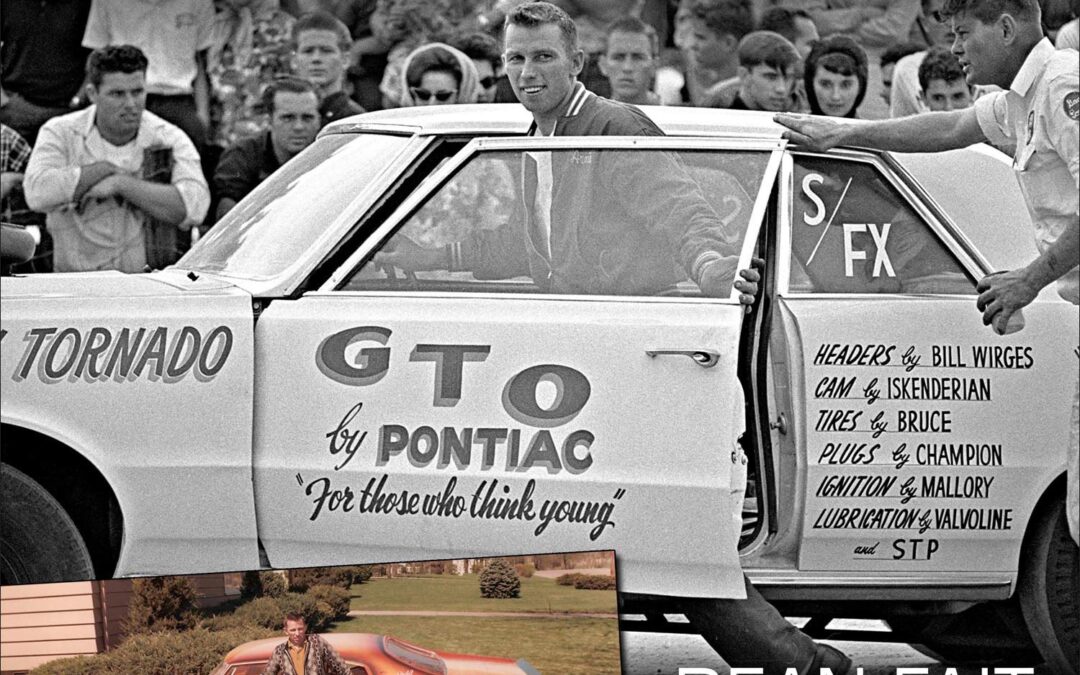
Arnie “the Farmer” Beswick was called “the consummate underdog” by Hot Rod magazine. While there was good reason, there is much more to his unbelievable career.
Born a third-generation farmer in the small town of Morrison, Illinois, Arnie Beswick’s driving career began not behind the wheel of a straight-line terror but that of a tractor. On local dusty roads, Arnie’s budding reputation grew with street cars, as the “flying farmer” was coined to describe his driving style. When drag racing began in the Midwest in the early 1950s, Arnie was one of the pioneers who campaigned Dodges and Oldsmobiles. In 1960, he purchased his first Pontiac and never looked back.
At the beginning, he didn’t like the “farmer” nickname, but he quickly learned to utilize the name to lull his competition into complacency. After all, what could a simple farmer know of the world of high-performance drag racing? Throughout the 1960s, Arnie’s Mr. B’s Passionate Poncho, Mystery Tornado, Star of the Circuit I and II, Tameless Tiger, and Super Judge all contributed to dispel the myth that a simple farmer couldn’t dominate straight-line racing.
Arnie was an innovator, fierce competitor, entertainer and showman who always gave fans their money’s worth at the track. He is still brand loyal–sticking with Pontiac long after production models ceased. Arnie has always been a fan favorite for this reason, and he continues to exhilarate fans at the track with his cast of potent Pontiacs.
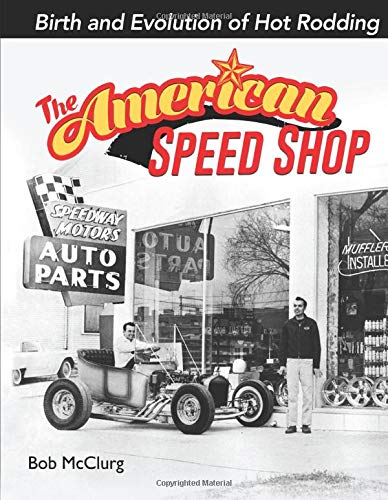
The history of hot rodding and performance cars has been well chronicled through the years. Books and magazines have covered the cars, builders, pioneers, engineers, early racers, muscle cars, street racers, etc.. Most take a nostalgic and fun look at the cars that many have loved their entire lives. Some even cover the lifestyle, the hobby as it involves people, and the effort, time, and commitment people put into it. It is more than just a hobby to most, and to many, a certain wave of nostalgia comes over them when remembering what the car scene was like “back in the day.”
The local speed shop is an important element of the nostalgic feeling that people have when fondly remembering their hot rodding youth. Speed shops were not just parts stores, they were a communal gathering place for car guys wanting to talk smart, bench race, and catch up on the local scene, as well as to solicit the expert advice from the owner or staff behind the counter.
Here, longtime hot rodder and industry veteran Bob McClurg brings you the story of the era and the culture of speed shops as told through individual shop’s histories and compelling vintage photography. He covers the birth of the industry, racing versus hot rodding, mail-order, and advertising wars. You learn about the performance boom of the 1960s and 1970s, lost speed shops as well as survivors, and a overview of the giant mail-order speed shops of today.
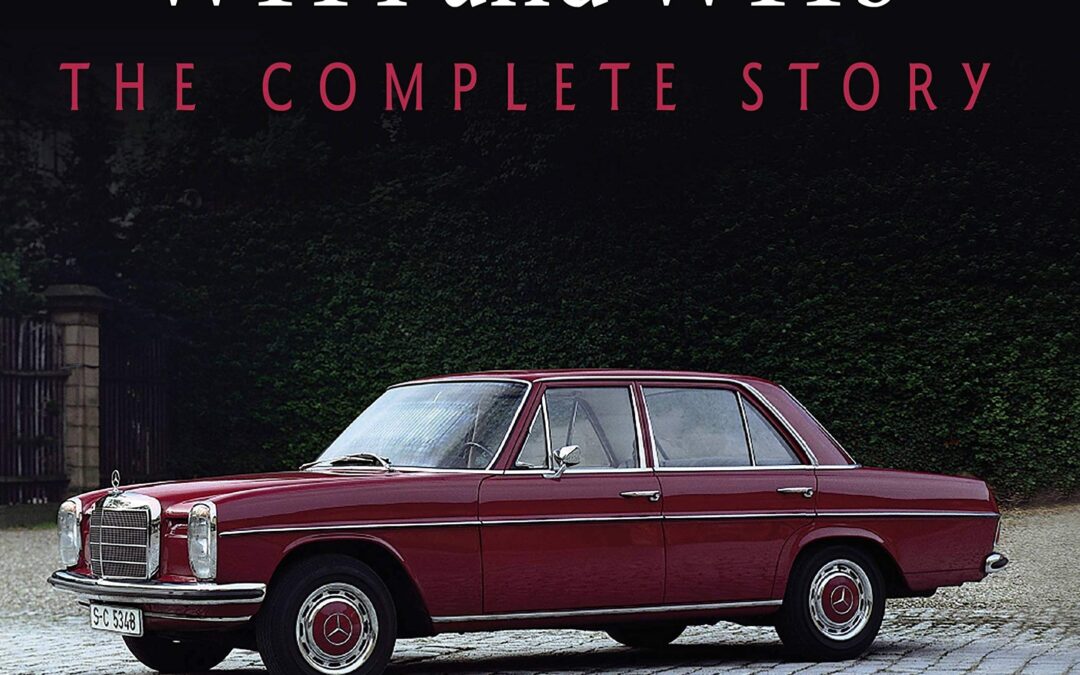
The W114 and W115 models were enormously successful for Mercedes-Benz, and their sales in nine years of production between 1967 and 1976 almost equalled the total of all Mercedes passenger models built in the 23 years between 1945 and the time of their introduction in 1968.
There were many reasons for this success, but perhaps the most important was that Mercedes expanded the range to include a simply vast amount of variants including four-cylinder and six-cylinder petrol engines, four-cylinder diesels; saloons, coupes and long-wheelbase models.
This book features the story of the design and development of the W114 and W115 ranges. It gives an extensively illustrated look at the special bodywork on both standard and long-wheelbase models, and includes full technical specifications, including paint and interior trim choices. There is a chapter on the special US variants. Production tables and model type codes are given as well as the Experimental Safety Vehicles developed from these cars. Finally, there is a chapter on buying and owning a 114- or 115-series Mercedes.
Today, the W114s and W115s have a strong enthusiast following around the world. They are appreciated as survivors from a simpler age, as the cars that laid the foundations for the hugely successful ranges of mid-sized saloons that followed from Mercedes, and because of the sheer diversity of their types and specifications. No enthusiast of these fine models will want to be without this book.
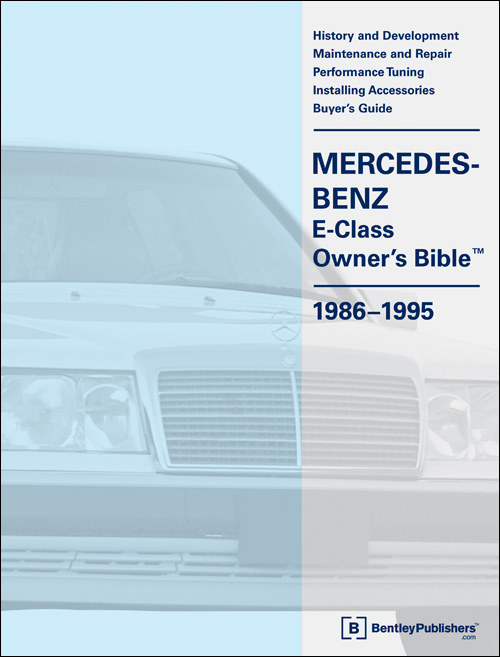
- History and Development
- Maintenance and Repair
- Performance Tuning
- Installing Accessories
- Buyer’s Guide
| The E-Class Owner�s Bible” is an E-class buyer�s guide, maintenance handbook and technical reference source wrapped into one. It is full of tech tips, service hints and system descriptions, plus lots of insightful information about the W124 E-Class chassis.
This book can help steer you through the purchase of your first Mercedes-Benz, provide the information necessary to maintain your E-Class to factory standards, give you the assurance to speak knowledgeably to your service professional and provide you with the hot setup for better road handling.
Models included in this Mercedes-Benz repair manual:
Gasoline engine:
- 260E
- 300E, 300E 2.6, 300E 2.8, 300E 4MATIC
- 300CE, 300CE cabrio
- 300TE, 300TE 4MATIC
- 400E
- 500E
- E320 sedan, coupe, cabrio and wagon
- E420
- E500
Diesel engine:
- 300D Turbo, 300D 2.5 Turbo, 300TD Turbo, E300 Diesel
|
|
The prospective buyer will also find tips on what to watch out for, why a pre-purchase inspection is important and why one model may be preferred to another. Do-it-yourself owners will discover a huge hands-on maintenance chapter to help keep their E-Class at peak efficiency.
Technical highlights:
- Comprehensive maintenance procedures, including HVAC microfilter replacement, brake pad and rotor replacement and engine oil and fluid change procedures listing the necessary tools, tightening torques and fluid capacities.
- Year-by-year analysis of E-Class technical highlights, including the inspiring 500E sports sedan and when the multi-cam M104 engine replaced the M103 single cam workhorse.
- Buying tips on how to get the best car for the least amount of money, things to look for during the test-drive and how having a prepurchase inspection can potentially save you thousands of dollars.
- Seasoned advice on choosing the right repair shop, be it an authorized Mercedes-Benz dealer, an independent specialist or an all makes-all models shop.
- Detailed technical information on vehicle systems, including engines, suspension, drivetrain, body and interior features.
- Performance modifications, including a listing of parts needed to upgrade to the Sportline suspension.
- A brief historical overview of Mercedes-Benz, the world�s oldest car company.
To bring you this authoritative volume, Bentley Publishers has teamed up with Stu Ritter, a 25-year independent Mercedes-Benz repair shop owner/technician and current technical editor of The Star (the magazine of the Mercedes-Benz Club of America).
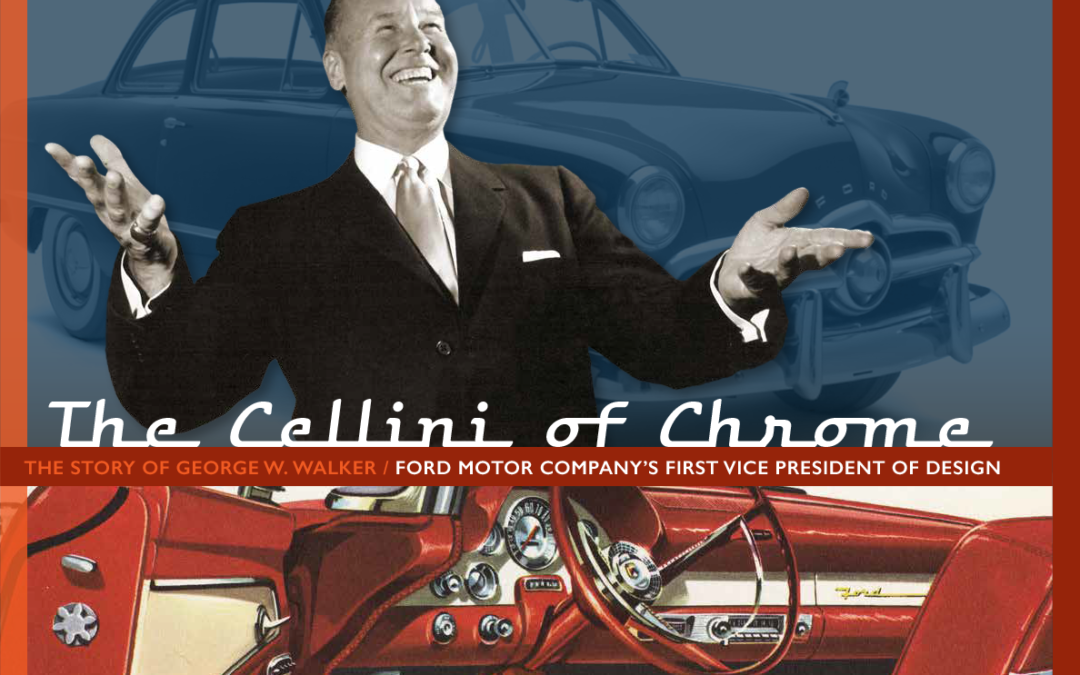
Henry Dominguez’s newest book The Cellini of Chrome, introduces the surprisingly unknown but truly fascinating career of George Walker, the Ford Company’s first full Vice President of Styling.
In the same flamboyant vein as other design greats such as Harley Earl, Gordon Buerig, Vergil Exner, Raymond Loewy and William “Bill” Mitchell, Walker developed the standard for key Ford Motor Company Products for the 1950s and ‘60’s. Beginning with the enormous success of the 1949 Ford, George became the catalyst for the iconic appearance of Ford, Mercury and Lincoln models, elevating Henry’s company to one of the all-around best-selling Automotive operations in the World.
With a personal history anything but bland, his elegant style of dress, appeal to attractive women, signature winning smile, and willingness go toe to toe with industry giants such as Henry Ford II (“The Deuce”) and other top executives, Walker made himself a key figure in the highly competitive environment of mid-20th Century automotive design.
His story is a must for any automotive enthusiast looking for an inside view of how the stylistic character of Ford products was created by Walker and his associates.
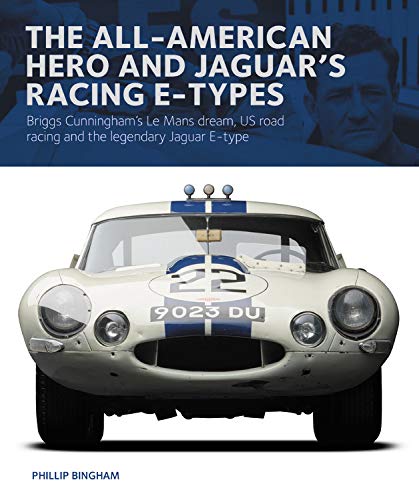
First seen by the wider world at the 1961 Geneva Motor Show, the Jaguar E-type redefined perceptions of how a sports car could – and perhaps should – look. No less a figure than Enzo Ferrari is said to have described it as “the most beautiful car in the world”. Small wonder that demand swiftly exceeded supply after Jaguar initially laid down plans to build the car in relatively small numbers.
It was an instant hit on racing circuits too: little more than a month after the launch, Graham Hill took a roadster to victory on its debut at Oulton Park. Chassis 875027, the focus of this story, was the first E-type campaigned by American racing entrepreneur Briggs Cunningham’s famous team and its performances helped persuade Jaguar to use the E-type as the basis for a competition thoroughbred that has become one of the most coveted of all time: the Lightweight
- The E-type evolved from a distinguished series of Jaguar sports cars that notched up a sequence of victories at Le Mans in the 1950s. The car’s development is covered in detail and illustrated with exquisite cutaways.
- Briggs Cunningham had an interesting tale to tell away from motorsport – as did many of his racing companions. He skippered the winning yacht in the America’s Cup; his right-hand man Alfred Momo won the Targa Florio as a co-driver, aged 14, and later climbed onto the wing of an airborne biplane to repair a leaking fuel line. Their contrasting backgrounds are covered in detail.
- Before aligning with Jaguar, Cunningham harboured hopes of putting together an all-American team capable of winning the Le Mans 24 Hours. His eponymous cars made their mark, without ever quite fulfilling his dream, and feature as part of an engaging wider story.
- In addition to running some of motorsport’s best-known names, including Bruce McLaren, Dan Gurney and Jack Brabham, Cunningham was also associated with several unsung heroes. Here, racers such as John Fitch, Phil Walters and Walt Hansgen receive the credit they deserve.
- The book is handsomely illustrated with period photographs from some of the world’s most respected collections, as well as a gallery of studio photographs showing the car as it is today.
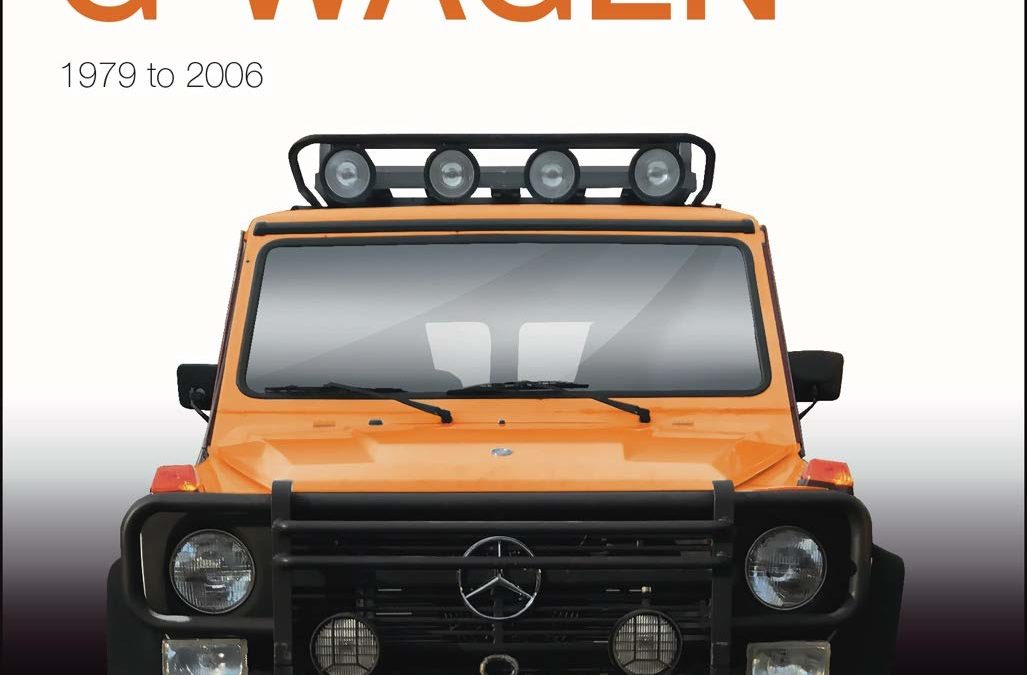
Codenamed W460, the iconic Mercedes-Benz G-Wagen, with its boxy, square edged no frills look, set out to be Stuttgart’s answer to the Range Rover. However, by going back to Gottlieb Daimler’s premise of “Nothing but the best,” it quickly took its place throughout the world as “The Best 4X4.”
This Essential Buyer’s Guide will navigate you through the various model changes, starting from the simple hand-built W460, through to the more luxurious market of the W463. You will find details of model changes, engine specifications, and issues that you may come across when looking to buying one of the best purpose-made vehicles around.
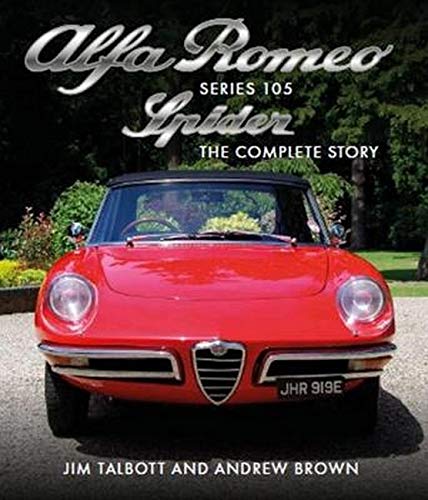
At the heart of all Alfa Romeo cars is a design philosophy that makes them true drivers’ cars and one reason to own a classic Alfa is to enjoy a driving experience that is no longer available from modern vehicles. The Alfa Romeo 105 series Spider first appeared in 1966 and is one of the most admired drop-head sports cars to come out of Italy, however its radical new look was not immediately welcomed.
As prospective buyers gradually warmed to the model, enhancements were introduced including more powerful engines and higher-spec body and interior fittings. Despite its inauspicious start, production of this much-admired car lasted for twenty-seven years, finally stopping in 1993. Jim Talbott and Andrew Brown pay homage to the 105/115 series Alfa Spider.
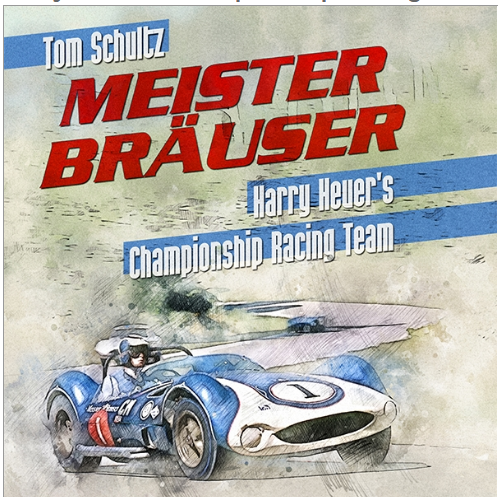
In early 1959, young Harry Heuer, Executive Vice President of the Peter Hand Brewery, Chicago, Illinois, caught the racing bug. He immediately bought a race car and entered it in the May 1959 Meadowdale USAC professional race. At the same time, Reventlow Automobiles Inc., builder and racer of the Scarab, put both of its 1958 race-winning Scarabs up for sale. Heuer bought one, hired Augie Pabst to drive it, and an unprecedented run of wins and championships resulted.
An unforeseen chain of events later in 1959 resulted in the newly-formed Meister Bräuser Racing Team purchasing the second of the two Scarabs, which meant that Heuer had what were arguably the two best sports racing cars in the country united in one team. The results were immediate. A championship in 1959, and a streak of race wins throughout 1960 that earned a second championship. Over the next three seasons three more championships were garnered.
Besides its on-track successes, Meister Bräuser was a leader in promoting team identity. It was one of the first to utilize an enclosed tractor trailer rig to, not only transport the cars, but also to be a rolling at-track machine shop. They owned a small pit tractor to tow the cars around the paddock and had support passenger vehicles available for the crew. All the vehicles were painted in the team colors of dark metallic blue trimmed with white and accented by red pin stripes. The team members were outfitted in matching uniforms and were often flown to the races rather than left to drive cross-country.
The Team ran for only five years, but in that time set a mark for professionalism, wins and championships. They raced hard and played hard. This book recounts the history of the team with their triumphs and their failures. We think that you will find it enjoyable reading, and a valuable look into American racing in the early 1960s
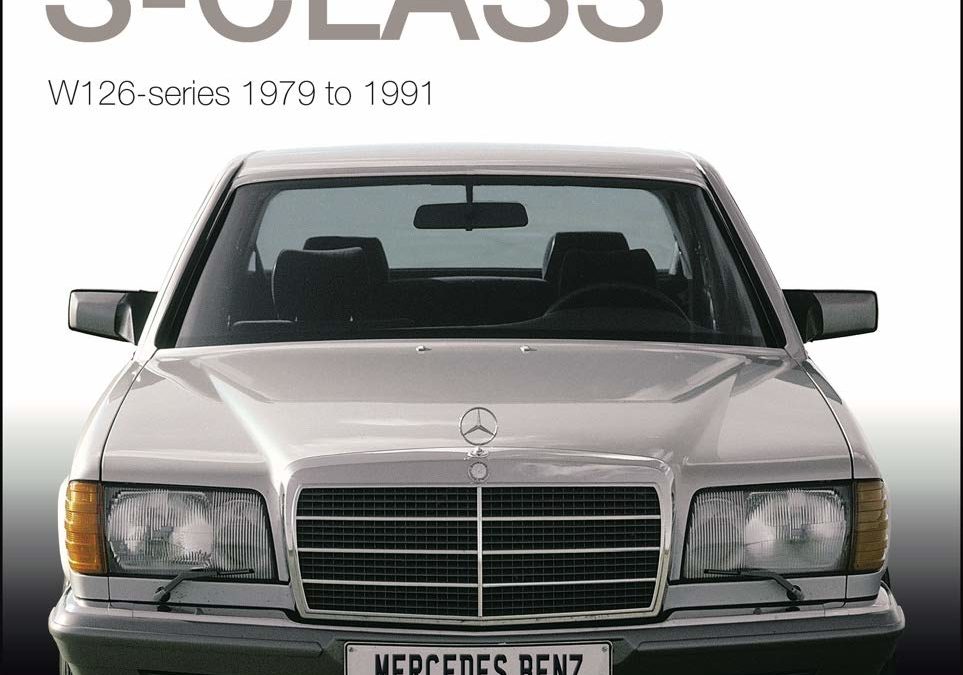
Mercedes-Benz S-Class is an introduction to owning, driving and maintaining a Mercedes-Benz S-Class W126 Series, and a step-by-step guide to evaluating one for purchase. This book includes colour photos of what to look for and what to avoid, plus a realistic assessment of running and restoration costs, as well as market values. This includes servicing costs, spare parts prices, and the relative values of the various models, specifications and vehicle conditions you are likely to encounter. Written in an easy to follow, jargon-free style, this book will equip you with all you need to know to buy the Mercedes S-Class of your dreams.
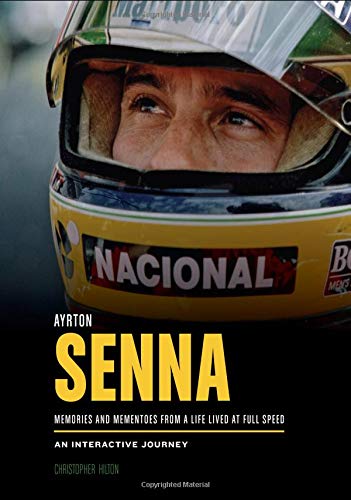
SOLD OUT
During his lifetime, Brazilian Formula 1 racing champion Ayrton Senna was widely recognized as a leader in his sport, a pioneer in driving technique, a hard racer, and a compassionate man. Above all, he believed that impoverished children should be able to realize their potential. Since his fatal crash during the 1994 San Marino Grand Prix, Senna’s remarkable career and humanitarian outlook have continued to inspire the world. The Ayrton Senna Institute, a fulfillment of his dreams, has helped educate more than 7.8 million Brazilian children since 1994, and its impact only continues to grow.
Now, the Senna family has opened its archives, sharing photographs of private moments at home and at the racetrack. Additionally, an assortment of treasured ephemera from Senna’s life is included in 13 beautiful envelopes. Readers can pull out and examine realistic replicas of his baptism certificate, handwritten letters and race agendas, a keepsake formal photo, autographed team stickers, and more than 20 other special items.
The book’s striking imagery forms a focal point around which bold design and compelling narrative intertwine. In exclusive new interviews, Senna’s family and teammates share personal anecdotes and favorite memories. Fully illustrated and uniquely interactive, Ayrton Senna: Memories and Mementoes from a Life Lived at Full Speed will be a cherished addition to any fan’s collection.

Do you dream of restoring your own classic car? Or do you simply need affordable, time-tested techniques to keep your older model car looking good and on the road? Sargent provides the fundamentals you need to get started!
Drawing upon his extensive experience as a skilled instructor and metal man, Sargent details the basics of sheet metal repair with techniques that have been proven successful on the job and on the road. In this classic primer, Sargent demystifies metalwork with effective techniques for straightening sheet metal. With its emphasis on the basics, Automobile Sheet Metal Repair stands apart from other books on this subject for its remarkably detailed and precise directions. This guide imparts the essentials of everything you need to understand to get started, including:
- Working properties of sheet metal
- Shapes, reinforcements, and damage conditions common to body panels
- Basic repair operations used in metal straightening
- Uses and limitations of hand tools and shop equipment
Sargent asserts that a strong foundation of knowledge and determination are the key tools for success in this line of work. Initially published in 1961, Automobile Sheet Metal Repair remains a timeless primer that furnishes the fundamentals and provides an effective alternative to parts replacement for professional and shadetree mechanics interested in old-school bodywork.
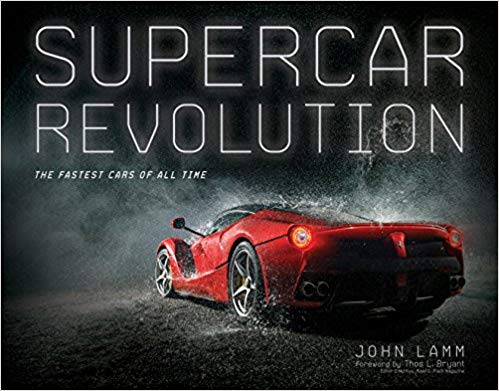
Supercar Revolution charts the evolution of the battle for performance and supremacy among the world’s leading marques, including Ferrari, Lamborghini, Bugatti, Porsche, Aston Martin, and Ford GT.
If you want to get to know the ins and outs of the high-budget, near space-age vehicles we call supercars, then you need look no further. Supercar Revolution profiles the designers and engineers who developed these beasts, and includes interviews with the racers and celebrities who drive them. And that’s not to mention the fabulous photographs of the supercars themselves you’ll find throughout this highly produced volume.
Jay Leno, the host of Jay Leno’s Garage and one of the best-known automotive collectors and enthusiasts in the world, is also featured in several hilarious and informative commentaries. You’ll love his many stories and be informed by his opinions on these incredible cars (many of which he owns).
Supercar Revolution conveys the power of automotive aesthetics and performance as they’re pushed to their absolute limits like you’ve never seen before. It is a new benchmark in automotive publishing, and is destined to become a classic history of these incredible marques.
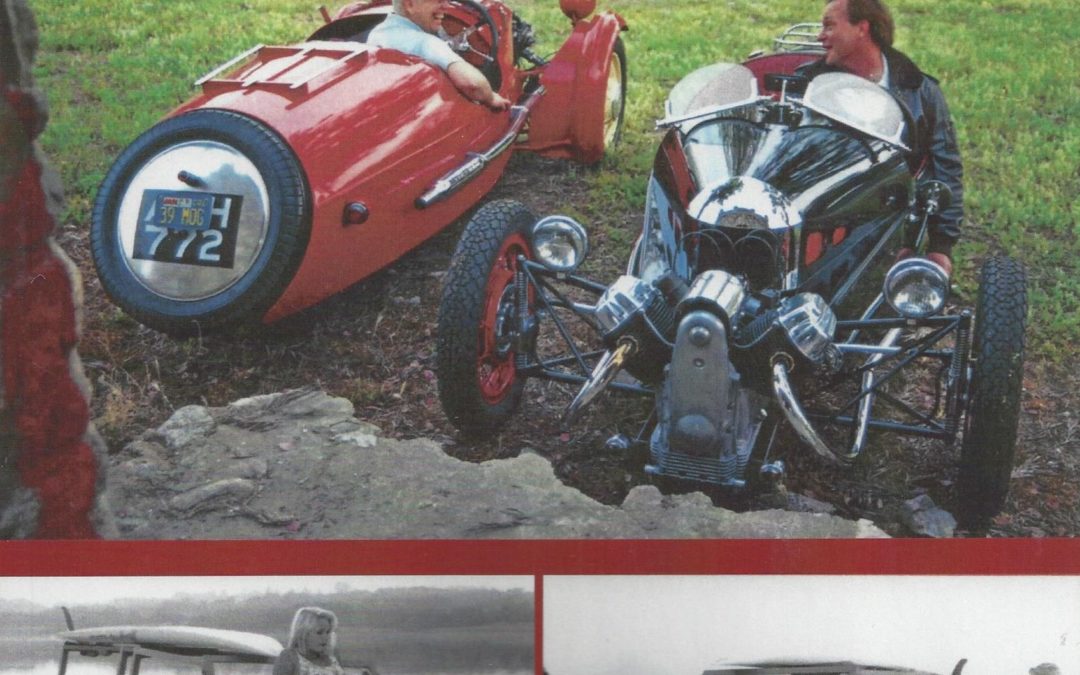
Book number six in the series is dedicated to “SCRATCH-BUILDING CARS” in low volumes, which was at one time a common practice across the USA. Contents: Introduction. Chapter One: Building a pre-war motorcycle-inspired “trike”. Prototype car and plane builder David J. Anders walks us through the construction of a complete frame, the suspension, and a full steel body for his trike. Chapter Two: Understanding Timber-Based Body Structures. Chapter Three: Although timber-based automotive body-frames were the standard type of auto body construction up until 1937, there was another type of automotive and aircraft inner wooden body structure that was developed and produced in WWII with outstanding results. The wood vs. metal public relations war was being fought among the automakers beginning in the ’30s before car production ceased for WWII. After civilian auto production started up again, that post-war production only included high-volume all-steel-bodied vehicles. Because of this, the new wood monocoque type of structure that was developed during the war and for the war was never implemented among the major automakers. We follow several small companies that produced wood monocoque frames in the post-war era, with some surprising results. Chapter Four: new Tricks with Wood. Chapter Five: Body Bucks. Chapter Six: French New-Age Coachbuilding with coachbuilder Edouard de Vacourbeil providing a closer look at the pre-war “French Martinet” style of power hammer. Chapter Seven: Sylentlite – a little-known coachbuilding experiment involving casting full touring car bodies of aluminum. Chapter Eight: My Life as a Panelbeater, first published in Automobile Quarterly in 1978. Reproduced with permission of Automobile Quarterly, the sketches and writings of Percival Talman comprises this chapter
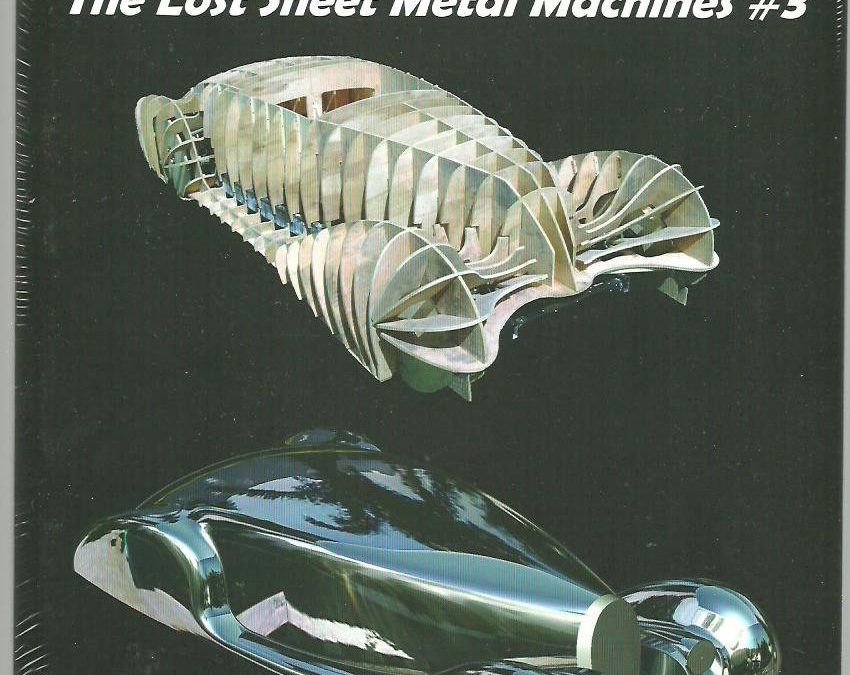
This volume contains chapters on: The Hand-Built Delahaye Project; Another Look at Digitally-Created Surfaces; Swedish Pullmax Universals, Part 1, The Machines; Swedish Pullmax Universals, Part 2, The Tooling; Shrinking and Stretching Machines; Reforming aka Contour, Profile and Finish-Forming; Eckold Ag, Lessons in Forming Sections. Includes, Body Bucks, Sheet Metal Spinning, Swedish Pullmax, Shrinkers/stretchers.




